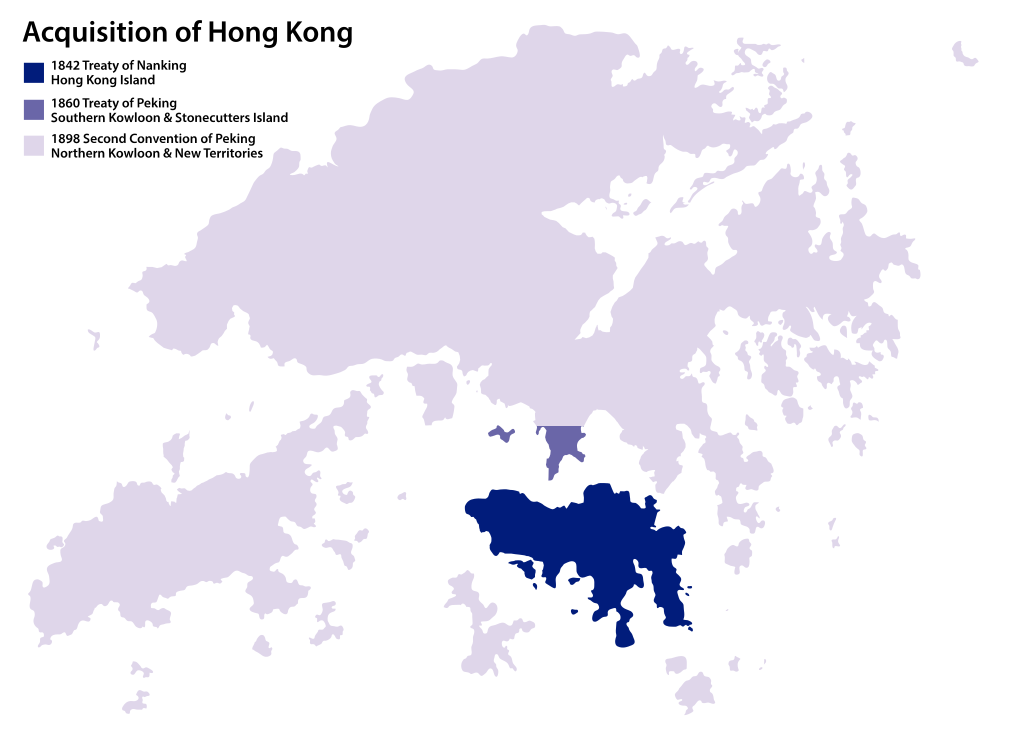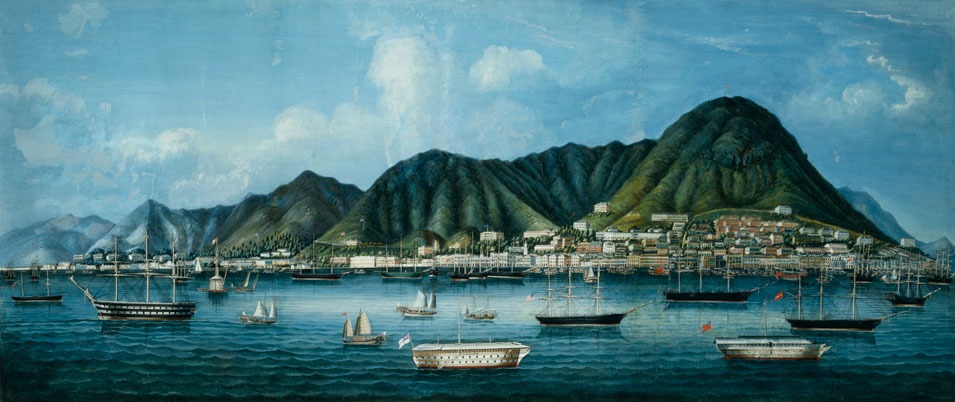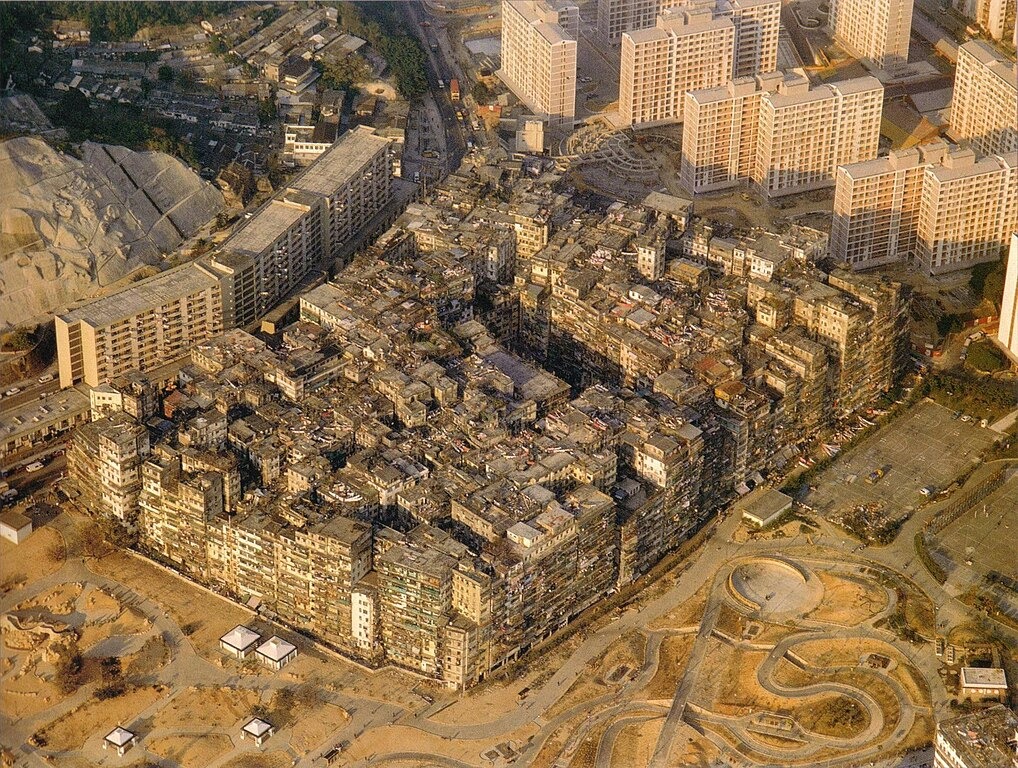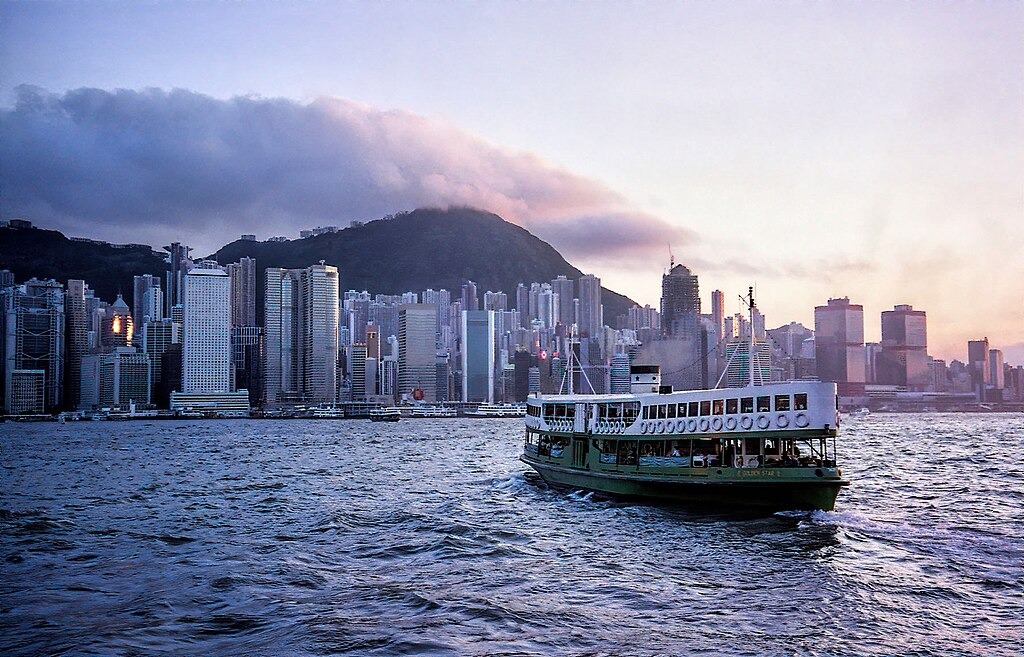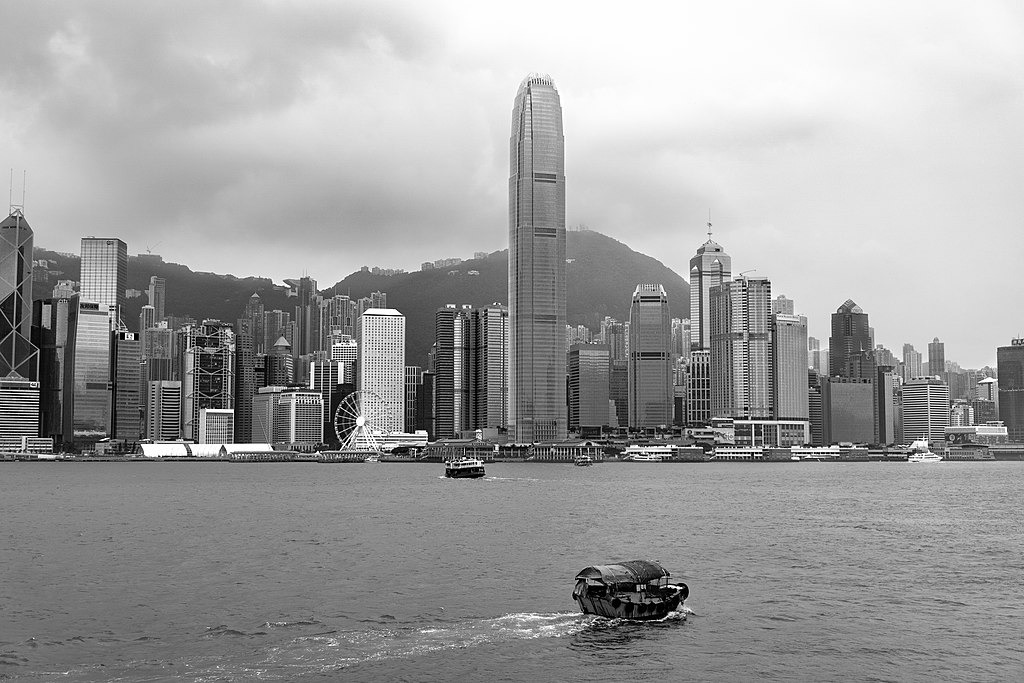Hong Kong is now one of the most important financial centers in the world, but for most of its history it was just a sparsely populated area of farming and fishing villages. Only after the British took control of the region in the 19th century Hong Kong grew to become a major trading center between West and East, and developed its own unique culture, blending European and Chinese (or more specifically Cantonese) characteristics. Even after its return to China and despite its complicated relationship with the mainland, Hong Kong has remained one of the most highly developed regions in the world, and has retained its peculiar culture.
The region of Hong Kong was first settled during the Stone Age, over 30,000 years ago, and during the Neolithic it was inhabited by the She people, who lived on the southern coast of China. During the Warring States period, between the 5th and 3rd century BCE, this area saw an influx of Yue people escaping from the north, who over time assimilated with the previous inhabitants. Shortly after consolidating his rule over the newly unified China in 221 BCE, the first emperor Qin Shi Huang of the Qin dynasty sent a large army to take control of the Yue people in the south. The area of Hong Kong came under Qin rule during this time, but the death of the emperor in 210 BCE brought chaos throughout China. In 204 BCE, a general named Zhao Tuo, who previously served under the Qin dynasty, founded a kingdom known as Nanyue, which occupied the southern coast of China and the northern half of modern-day Vietnam. Nanyue soon had to face the Han dynasty, who had unified China once again and was expanding south. In 111 BCE the Han dynasty conquered Nanyue, and Hong Kong was likely settled by Han Chinese for the first time soon afterwards.
The region of Hong Kong was first part of the Panyu County, centered in modern-day Guangzhou, and later it was governed by the Bao’an County, also known as Xin’an County, which included what is now Shenzhen. Hong Kong remained part of this county until the 19th century, when it was ceded to the British Empire. Meanwhile, the Guangdong region of southern China flourished as a trading center, and the Tuen Mun area of Hong Kong served as a port, naval base, salt production center, and a hub for pearl hunting. The earliest known written evidence of an event in Hong Kong is an inscription referring to the construction of a pagoda in 1012.
During the Mongol invasions, the Song dynasty escaped to southern China, fleeing to the Guangdong region in 1276. In 1277 they moved their court to Lantau Island, and then to Kowloon City, both now part of Hong Kong. During what was supposed to be a temporary stay in the small villages of the Guangdong area, Emperor Duanzong of Song died of an illness at the age of eight. He was succedeed by his younger brother, Emperor Bing, who was six years old and was enthroned on Lantau Island in 1278. However, the Mongols were approaching, and on 19 March 1279 they defeated the Song navy in the Battle of Yamen, a naval battle that took place on the coasts near Hong Kong. This defeat marked the end of the Song dynasty, and military commander Lu Xiufu jumped off a cliff with the child emperor in his arms, killing them both.
During the age of the Mongol invasions and the rule of the Yuan dynasty, Hong Kong saw its population increase, as more Chinese fled to the south, but the area was still rural and mostly barren. Later, during the age of the Ming and Qing dynasties, the coast of Guangdong was often attacked by pirates, and Hong Kong was especially vulnerable. Thanks to its twisting shores, its hilly territory, its many islands, and its distance from the administrative centers, Hong Kong became an excellent hideout for pirates. To protect themselves, the locals fortified their villages with walls and sometimes even cannons. While most of these fortified villages have been later demolished, a few still survive to some extent in Hong Kong to this day. Until the 19th century, the area of Hong Kong remained inhabited by various ethnicities, such as the Punti and Hoklo in the New Territories, and the Tanka and Hakka both in the New Territories and Hong Kong Island.
The first recorded non-Asian person to visit Hong Kong was Portuguese explorer Jorge Álvares in 1513. He established the trading settlement of Tamão either on Lantau Island or on a nearby coast, and Portuguese merchants started trading in southern China. The Portuguese also built military fortifications in Tuen Mun, and soon clashed with the Chinese. In 1521, the Ming navy defeated the Portuguese fleet in the Battle of Tunmen, and Tamão was abandoned. Despite this, the Portuguese didn’t abandon the idea of trading in southern China, and they reestablished trade relations in 1549, which led to the founding of the colony of Macau in 1557.
By the 19th century, the British Empire was heavily dependent on China for the importation of tea, silk, and porcelain, which the Qing Empire mostly exchanged for luxury items and silver. As more European silver flowed to China, the trade imbalance between the British and Chinese grew, as the precious metal became increasingly difficult to obtain for the British. To counter the imbalance, the British East India Company began to grow opium in India and pushed British merchants to sell opium to Chinese smugglers for illegal sale in China. Many Chinese became addicted to opium, and in 1839 the Qing dynasty seized and destroyed millions of pounds of opium, pledging to end the opium trade entirely. Tensions quickly escalated, and this led to the First Opium War, which lasted until 1842.
During the war, on 20 January 1841, British and Chinese officials reached an agreement, known as Convention of Chuenpi, which ruled the cession of the island of Hong Kong to the British. Both governments refused to ratify the agreement, but the British still occupied the island and formally claimed it as a colony on 26 January 1841. The following year, the Treaty of Nanking marked the end of the First Opium War, and Hong Kong was officially recognized as a Crown Colony of the British Empire, with the territory being ceded in perpetuity. However, tension between China and the British remained high, and they fought in the Second Opium War between 1856 and 1860. This was ended with the Convention of Peking, which stipulated that the Qing dynasty had to cede in perpetuity part of the Kowloon Peninsula and the small Stonecutters Island to the British Empire, expanding their Hong Kong colony.
Over the following decades, the British became concerned about the security of the isolated island, which was surrounded by Chinese territory, and seeked to expand their colony. The opportunity came after the Qing Empire was defeated in the First Sino-Japanese War, which led to a series of new unequal treaties forced on China by Japan and Western powers. As the Europeans scrambled to obtain as much as possible from the Qing, the British imposed on China the Convention for the Extension of Hong Kong Territory in 1898. With this treaty, the British obtained as a 99-year lease of the area surrounding Kowloon and Hong Kong Island, which became known as New Territories. The Chinese government retained a military fort in Kowloon as an exclave, which later became known as the Kowloon Walled City.
The expansion of British rule over Hong Kong (Vatnið, Wikimedia Commons, CC BY-SA 4.0).
Soon after the British takeover, Hong Kong began to grow as the main trading center of Western merchants with China, attracting traders and bankers, while many Chinese also migrated here during the 1850s to escape the brutal Taiping Rebellion that was ravaging China. As Hong Kong expanded, gas and electricity were introduced, while traditional transportation gave way to buses, ferries, and trams. The population increased dramatically, from 7,000 people in 1841 to 368,000 in 1901, and to 1.6 million in 1941. Christian missionaries founded churches and schools in Hong Kong, including a college of medicine which saw Sun Yat-sen as one of its first graduates in 1892. Along with his fellow students in Hong Kong, Sun Yat-sen began to advocate for the overthrow of the Qing dynasty in China, and he later went on to lead the 1911 Revolution which brought an end to Imperial China and established the Republic of China.
Hong Kong also saw some moments of tension between Chinese inhabitants and the British government. In 1899, some Punti clans rebelled against the British takeover of the New Territories, sparking what became known as the Six-Day War. The British army attacked the walled villages of the Punti, who resisted for a few days before the British were finally able to enter. Afterwards, the British made the concession of allowing indigenous residents of the New Territories to retain some of their traditions. During this confrontation, the British also attacked the Kowloon Walled City, but found out that the Qing soldiers were gone, and only a few residents remained. While it remained officially a Chinese territory, the Kowloon Walled City was left to the British in 1912, after the fall of the Qing dynasty. This area, labeled as “Chinese Town” became a curiosity for Western tourists, but the Hong Kong authorities tried to demolish it several times. However, the Nationalist Republic of China protested, claiming jurisdiction over the city.
Hong Kong in the 1860s.
Meanwhile, Hong Kong also suffered a major plague outbreak in 1894, which returned annually until 1929 and killed over 20,000 people. The outbreak was made worse by the poor living conditions of the Chinese in Hong Kong, and the distrust of the Chinese community towards the British authorities. The British would often make house-to-house inspections to search for undocumented sick people, but the Chinese community was reluctant to let the British enter their houses, so they often threw out infected bodies at night to avoid detection. Nevertheless, the study of the plague epidemic in Hong Kong led to the discovery that the disease was caused by the bacterium Yersinia pestis. The epidemic also resulted in the shift from Chinese medicine to Western medicine in the hospitals of Hong Kong. The colony was also devastated by various typhoons, most notably in 1874, 1906, and 1937, which killed thousands of people each.
In 1937, a full-scale war began between China and Japan, and the Japanese quickly took over large parts of Chinese territory. In 1938, the Japanese army occupied Guangzhou, and Hong Kong was surrounded. Fearing an imminent attack, the British initially reduced their presence in Hong Kong, only improving some defences as a way to gain some time. However, they then reversed their decision, and sent additional reinforcements, pledging to defend the territory. The Japanese attacked Hong Kong on 8 December 1941, only a few hours after the attack on Pearl Harbor, and the British army found itself outnumbered by the Japanese army and overwhelmed by heavy bombardments. The British resisted but had to slowly retreat, and they surrendered to the Japanese on 25 December.
The years of Japanese occupation were brutal for Hong Kong, as hyper-inflation and food rationing became the norm, while the economic activities came to a halt. Civilians were often tortured, raped, and killed by the Japanese, and over 10,000 people were executed, while many more died of starvation or disease. Hundreds of thousands managed to flee, and by the end of the war the population had shrunk to 600,000. During the occupation, some anti-Japanese groups waged a guerrilla war of resistance, and Hong Kong was also often bombed by Allied air forces. Japan surrendered on 15 August 1945, and they handed back the control of Hong Kong to the British on 30 August. Japanese General Takashi Sakai, who led the invasion of Hong Kong and served as governor during the occupation, was tried as a war criminal and executed.
As the economic activities in Hong Kong reprised, the colony saw the return of many people who had fled the city, while a new influx of Chinese immigrants fleeing from the Chinese Civil War and the communist takeover also helped boost the population, which had already reached 2 million people by 1951. Hong Kong enjoyed an unprecendent period of growth in the following decades, as many foreign firms relocated from mainland China to Hong Kong, which became one of the most important economic centers in the world. As the population kept growing, many high-rise buildings were erected, and this soon became the norm in Hong Kong. The post-war period also saw the rise of Hong Kong cinema, especially during the 1970s thanks to the martial arts movies featuring Bruce Lee. The following decades also marked the height in popularity of Cantopop, a music genre influenced by traditional Cantonese opera and Western pop music.
However, the territory was also facing several issues. In 1967, Hong Kong saw a major revolt against the British colonial government, with many protesters harboring favorable views for the Chinese Communist Party. The riots were repressed, and pro-communist publications were banned, but the British government also tried to address the social issues behind the riots by carrying out various reforms. These included the “positive non-interventionism”, which was introduced in 1971 and remained the economic policy of Hong Kong under British rule. Meanwhile, in 1968, Hong Kong was severely hit by a flu epidemic, which later spread all over the world becoming a pandemic that killed between one and four million people worldwide.
Some tension also surrounded the contested Kowloon Walled City, as the Nationalist government of China once again claimed the territory after the Japanese surrender. In 1948, the British government accepted the Chinese jurisdiction over the Kowloon Walled City, while China agreed to not enforce their rule on the territory. With this agreement, the Kowloon Walled City basically became a lawless territory, and soon became a haven for crime and drugs. While it was ruled that the Hong Kong government had jurisdiction over the Kowloon Walled City in 1959, the area remained under the control of organized crime syndicates known as triads, and police rarely attempted to enter the area. Meanwhile, the small area also underwent a massive construction boom, and became the most densely populated place in the world, with over 35,000 people in just 26,000 square meters. Over time, the criminal activities diminished, and most people lived peacefully, with factories and businesses inside the city thriving. The Kowloon Walled City became its own little world, with unregulated schools, clinics, and religious societies, but the living conditions remained way lower than those of the rest of Hong Kong.
The Kowloon Walled City in 1989 (Ian Lambot, Wikimedia Commons, CC BY-SA 4.0).
Despite these issues, Hong Kong kept growing, and reached levels of life expectancy, literacy, and per-capita income among the highest in the world. The 1970s also saw a huge effort to fight corruption, which led Hong Kong to become one of the least corrupt societies in the world. Meanwhile, the People’s Republic of China replaced the Republic of China in the United Nations in 1971, and soon began to advocate for the return of Hong Kong and Macau to Chinese rule. As the 99-years lease of the New Territories was set to expire in 1997, the British and Chinese governments began to negotiate on the status of Hong Kong. Chinese leader Deng Xiaoping made it clear that he wouldn’t accept British administration over any part of Hong Kong, and after long rounds of negotiations, the British government conceded that they would eventually cede the territory to China.
In 1984, premier of China Zhao Ziyang and British prime minister Margaret Thatcher signed the Sino-British Joint Declaration, which set the conditions for the handover of Hong Kong to China in 1997. The treaty stated that Hong Kong would become a special administrative region of China, and would retain its existing governing and economic system separate from that of mainland China under the principle of “one country, two systems” for at least 50 years. The following years saw the preparation for the handover, which included the adoption of the Hong Kong Basic Law in 1990 as the new constitution of the territory, and was made to ensure that Hong Kong would retain its democratic system. However, many Hong Kong citizens were concerned about the impending Chinese takeover, and these concerns were exacerbated by the Tiananmen Square protests of 1989. This resulted in a wave of emigration that saw many leave Hong Kong, mostly for the United Kingdom. The Chinese and British governments also agreed to the demolition of the Kowloon Walled City, which took place between 1993 and 1994. A park was built where the city once stood. In any case, on 1 July 1997 Hong Kong was officially transferred from the United Kingdom to China. Following a similar agreement, Macau was also ceded by Portugal to China in 1999.
Hong Kong in 1996 (Dan Lundberg, Wikimedia Commons, CC BY-SA 2.0).
Now a Chinese territory, Hong Kong had to face many economic and political issues, and became divided between the pro-Beijing camp and the pro-democracy camp. Immediately after the handover, Hong Kong was severely affected by the 1997 Asian financial crisis that ravaged the economies of East and South East Asian countries. At the same time, Hong Kong was also hit by an epidemic of Bird Flu. This was followed by the SARS outbreak of 2003, which contributed to the economic downturn of the territory.
In 2003 Hong Kong also saw massive protests against the Chinese government after the introduction of an anti-subversion law which many people feared it would erode freedom. The legislation was withdrawn, but the Chinese government continued to introduce reforms, and protests continued. In 2014, Hong Kong saw a huge wave of protests known as the Umbrella Revolution, in response to the proposed reform to the electoral system of the territory. Meanwhile, the housing crisis in Hong Kong worsened, and the shortage of affordable houses made buildings in the territory among the most in-demand and expensive in the world. Several new high-rise buildings were built since the 1997 handover, while links to mainland China were strenghtened with the construction of new railway links and the Hong Kong–Zhuhai–Macau Bridge.
The protests against the Chinese government continued, and a new wave of demonstrations took place between 2019 and 2020, in response to a proposed law which would allow China to extradite criminals from Hong Kong to the mainland, potentially leading to political prisoners and de facto subjecting the territory to Chinese law. The legislation was withdrawn, but the government still strongly suppressed the protests, and in 2020 a new controversial security law was introduced, which made some Chinese laws valid in Hong Kong and made it illegal to advocate for the independence of the territory. Many international observers, including the government of the United Kingdom, deemed this law as a breach of the 1984 Sino-British Joint Declaration. Some countries relaxed their immigration laws for people of Hong Kong, and a massive wave of emigration from the territory followed.
Meanwhile, Hong Kong was also hit by the COVID-19 pandemic in 2020, but the experience of the SARS outbreak of 2003 meant that the territory was more prepared to handle the crisis than other countries, and the disease was mostly contained. Nevertheless, the pro-Beijing government used the crisis to postpone the 2020 election, but this move was seen by the pro-democracy camp as an attempt to neutralize the democratic movement that had gained momentum after the protests of the previous months and had triumphed in the local elections. The postponement of the election allowed the government to introduce another electoral reform, which further eroded democratic representation in Hong Kong.
Hong Kong in 2016 (brando, Flickr, CC BY 2.0).
Hong Kong is now continuing to suffer from the erosion of its democratic system, while most pro-democracy politicians and activists have been either arrested or forced into exile. The huge economic growth of mainland China in the past few decades also diminished the importance of Hong Kong for the Chinese economy, but the city still remains the third most important financial center in the world, after New York and London. Hong Kong also has one of the highest per-capita income in the world, despite suffering from huge wealth inequality, and is the city with the most skyscrapers in the world, but still has a severe housing crisis. While Chinese influence over the territory has increased rapidly, and the popularity of Hong Kong cinema and music has declined, the city still retains its unique culture to this day. The heritage of the British domination over the territory is still strong, for example to this day Hong Kong uses double-decker buses like the ones more commonly seen in the United Kingdom. The Chinese government has also heavily promoted the use of the Mandarin language, but only about 54% of its over 7 million residents can now speak it, and only 2% are native speakers. English is still more prevalent, with 58% of the people of Hong Kong who can speak it, while most of the population, over 93%, can speak the local Cantonese language, which is the native language of 88% of the people of Hong Kong.


